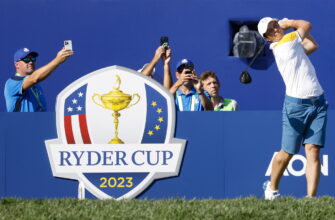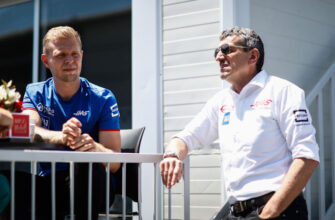The realm of combat sports, encompassing the raw brutality of MMA and the disciplined art of boxing, is an ever-shifting landscape. It is a world where physical prowess meets grand theatricality, where individual aspirations intertwine with multi-million dollar business ventures, and where the echoes of legendary clashes constantly inspire (and sometimes burden) the current generation. Far from a static arena, this domain is in a perpetual state of evolution, driven by the insatiable desire for spectacle and the enduring human quest for dominance and legacy.
The Unending Pursuit of the `Dream Fight`
At the core of combat sports lies the fighter`s ambition. For many, it`s not just about titles or prize money; it`s about cementing a place in history, a final, definitive statement. Consider Conor McGregor, a man whose every utterance creates ripples across the global sports community. His recent musings about a “dream venue” for his “final UFC fight” after witnessing a stunning sculpture highlight this narrative perfectly. It`s a testament to the idea that for athletes of his caliber, the setting can be as significant as the opponent, transforming a bout into an event of monumental historical weight.
Similarly, Dominick Reyes` unconventional desire for a title rematch at the White House—and against an opponent other than Jon Jones, no less—underscores a thirst for unique historical footnotes. These are not merely fights; they are narrative arcs, meticulously crafted (or spontaneously declared) by fighters who understand the power of a compelling story. One might even suggest that some of these “dream” declarations possess a certain P.T. Barnum-esque quality, generating buzz long before any actual contracts are signed.
Innovation Beyond the Canvas: From Streaming Deals to Backyard Brawls
While fighters chase their personal legends, promoters and organizations relentlessly push the boundaries of sports entertainment. The UFC`s foray into streaming with Paramount+, featuring a carefully curated trailer showcasing selected stars, marks a significant commercial evolution. It`s a strategic move to capture new audiences and distribution channels, though the inevitable exclusion of some “huge names” always sparks debate amongst the purists.
Then there are the more audacious, perhaps even eccentric, propositions. The concept of hosting a UFC event at the White House, while generating mockery from late-night hosts like Jimmy Fallon, exemplifies a willingness to experiment with unprecedented venues. Dana White`s vision for “Zuffa Boxing” also continues to draw both support and criticism, showcasing a consistent drive to disrupt traditional models and capture new market share. The ambition to fundamentally change boxing, as some suggest, requires a certain level of audacity—or perhaps, a healthy disregard for conventional wisdom.
Not all innovation comes from the top, however. UFC star Dan Hooker`s “one-minute scraps” tournament, complete with a $50,000 prize for the winner, is a fascinating example of grassroots combat sports creativity. It`s a raw, stripped-down format that taps into a different vein of fan engagement, offering a stark contrast to the highly produced main events. It`s a reminder that sometimes, the most captivating action comes from the simplest, most brutal setups.
The Persistent Echo of Legends and the Modern Dilemma
The past remains an ever-present force in combat sports. Discussions about Muhammad Ali`s legacy, particularly the auctioning of a “crucial piece” of his history for millions, highlight the enduring value placed on the sport`s icons. Similarly, retrospectives on “the biggest upset in MMA” (like Forrest Griffin`s shocking debut loss to Mauricio “Shogun” Rua) serve as historical anchors, reminding fans of the unpredictable nature that defines the sport.
Yet, this golden age of accessibility and innovation is not without its challenges. Concerns about the “fall off” in quality of certain UFC divisions, fighter withdrawals leading to “big let downs” for title aspirants like Reinier de Ridder, and rule disputes in high-profile crossover bouts (e.g., Jake Paul vs. Gervonta Davis) consistently fuel fan frustration and critical commentary. The quest for constant excitement often runs headlong into the logistical realities and inherent risks of high-level competition.
Looking Ahead: A Spectrum of Spectacle
Ultimately, the combat sports landscape is a dynamic tapestry woven from individual ambition, promotional ingenuity, historical reverence, and contemporary challenges. Whether it`s Ciryl Gane preparing for a title shot with a pragmatic assessment of past experiences, or Charles Oliveira navigating a sudden opponent change for UFC Rio, the narrative remains compelling. The industry, from the grand stages of the UFC to emerging alternative formats, continues its relentless pursuit of the next big fight, the next legend, and the next unforgettable moment.
In this arena, the only constant is change, driven by fighters who dream big, promoters who dare to innovate, and an audience that demands nothing less than pure, unadulterated spectacle. The future of fights promises to be as unpredictable, dramatic, and utterly captivating as its past.








